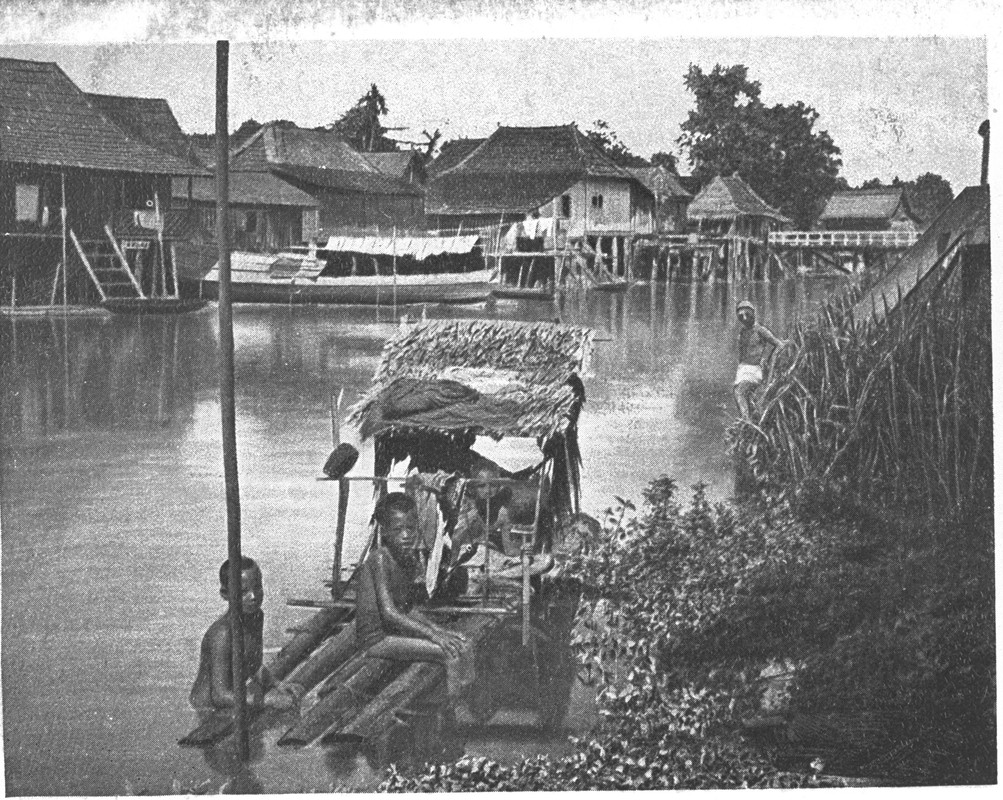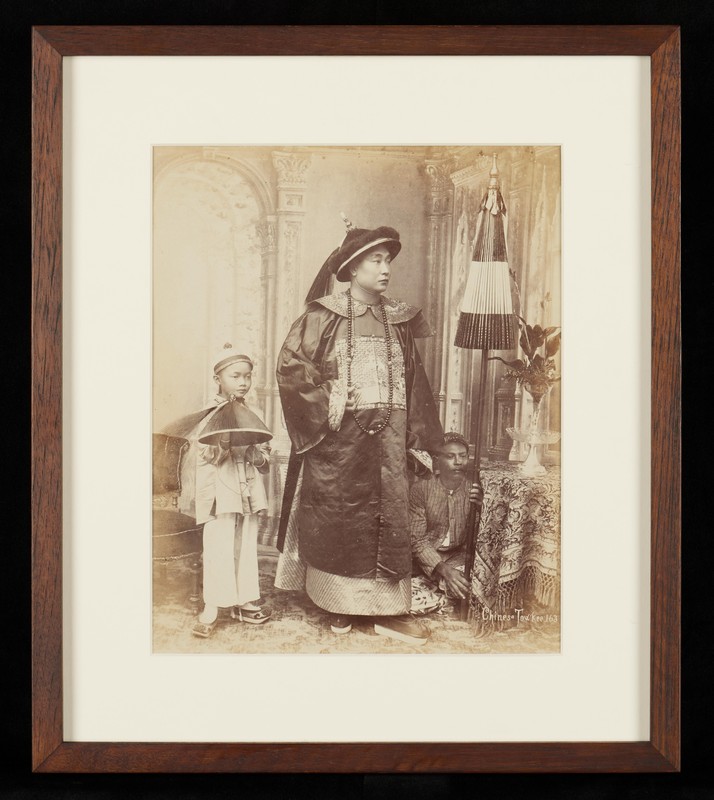Cheng San Teng and Loke Yah Teng: The cemeteries jointly established by the Cantonese and Hakkas
Organisations dealing with the cemeteries of Chinese immigrants had existed since the early days of modern Singapore. They played a significant role in unifying and leading their respective communities. The Hokkiens were served by Heng San Teng, while the Teochews had Tai Shan Ting. The Cantonese and Hakka communities, however, chose to collaborate instead of setting up separate cemeteries. This was likely because the two groups were smaller than the Hokkien and Teochew dialect groups and had limited resources. The cemeteries were managed by Fuk Tak Chi Temple, which had been built in Telok Ayer Street by the Cantonese and Hakkas in the 1820s.
Historical documents, including stone tablets and account books that have survived, indicate that Cantonese and Hakka communities in the early 19th century were made up of immigrants from the Kwong Wai Siew community (Guangzhou, Huizhou, and Zhaoqing), the Fong Yun Thai community (Fengshun, Dabu, and Yongding), and Kar Yeng Five Districts (Meixian, Jiaoling, Pingyuan, Wuhua, and Xingning). They established the cemeteries Cheng San Teng and Loke Yah Teng together. Less is known about Cheng San Teng, as the available historical records focus predominantly on Lok Yah Teng.
Cheng San Teng
Cheng San Teng was built before Loke Yah Teng, but the specific date of its construction remains unclear. For instance, a monument erected by the Kwong Wai Siew, Fong Yun Thai, and Kar Yeng communities in 1840 merely mentioned “a shared cemetery from previous years”. In the Fudeci lüyeting yan’geshi jinian tekan [Commemorative Issue of the Development of Hok Tek Chi Loke Yah Teng Association] (1963), Tao Gongzhu (birth and death years unknown) and other founding members clarified that this “shared cemetery” referred to Cheng San Teng, and that it had been fully occupied before Loke Yah Teng was established. They explained that Cheng San Teng had existed “before the Year of Wu Xu” — in other words, likely before 1838 — and that it was located in the coastal area to the east of Ann Siang Hill and west of the present Peck Seah Street. The cemetery was established as members of the community did not have the heart to leave the unclaimed bodies of deceased immigrants unattended. It was named Cheng San Teng (literally “green hills” in Chinese), after the area’s luxuriant green landscape.
Sporadic records from account books of Loke Yah Teng during the reign of the Guangxu Emperor reveal further details about Cheng San Teng. For example, the combined accounting records of Fuk Tak Chi Temple and Loke Yah Teng between 1887 and 1933 included the financial dealings of Cheng San Teng in 1905, and noted that it had last carried out repairs in 1906 and 1907. An entry of 50 dollars spent on exhumation in the “fifth month of the Year of Ding Wei during the Guangxu period” showed that the relocation of Cheng San Teng had begun in 1907. In addition, there is a monument sitting in the ancestral temple of Singapore’s oldest Hakka clan association, Ying Fo Fui Kun in Shuang Long Shan cemetery, which had been was erected on the “first day of the 11th month in the 33rd year of the reign of Guangxu” (1907) for the combined ashes exhumed from Cheng San Teng. This confirms that the cemetery was officially relocated at the beginning of the 20th century.
Loke Yah Teng
In 1838, when Cheng San Teng had run out of burial space, leaders of the Cantonese and Hakka communities applied to the colonial government to build a new cemetery. Two years later, they were assigned a 32-acre piece of land between Tiong Bahru and Havelock Road, with a lease term of 999 years. The new cemetery was named Loke Yah Teng (meaning “green fields” in Chinese) to match Cheng San Teng. A stone tablet was later erected to mark the cemetery’s establishment.


Historical inscriptions and documents suggest that Loke Yah Teng was affected by the linguistic and ancestral differences between the Cantonese and Hakka communities from the early 1800s to 1900s. Relationships and issues of identity within the organisation were much more complex and diverse than those faced by the Hokkien community’s Heng San Teng and the Teochew community’s Tai Shan Ting. At the same time, the role of Fuk Tak Chi Temple was limited. It was mainly a place for ancestral and religious worship that also provided basic funeral and burial services. This was unlike its Hokkien, Teochew, and Hainanese counterparts, which had played the wider role of community leadership.
The original sites of Cheng San Teng and Loke Yah Teng were later acquired by the government. Only the latter was relocated to Choa Chu Kang Cemetery. There was a total of 11,518 graves, of which 4,341 were named and 7,177 unidentified. Most of the rest of the kinship or geography-based collective tombs found their separate ways to places run by Cantonese or Hakka communities, namely Peck San Theng (the Kwong Wai Siew community), Shuang Long Shan Wu Shu Ancestral Hall of Ying Fo Fui Kun (Kar Yeng community), and Fong Yun Thai Association (Fong Yun Thai community).
This is an edited and translated version of 广客帮合办的坟山:青山亭和绿野亭. Click here to read original piece.
Chen, Ching-ho and Tan, Yeok Seong, eds. Xinjiapo huawen beiming jilu [A Collection of Chinese inscriptions in Singapore]. Hong Kong: The Chinese University of Hong Kong Press, 1972. | |
Dean, Kenneth and Hue, Guan Thye, eds. Chinese Epigraphy in Singapore 1819–1911. 2 Vols. Singapore & Guangxi: National University of Singapore Press and Guangxi Normal University Press, 2017. | |
Hok Tek Chi Loke Yah Teng Association editorial team. Fudeci lüyeting yan‘geshi jinian tekan [Commemorative Issue of the Development of Hok Tek Chi Loke Yah Teng Association]. Singapore: Hok Tek Chi Loke Yah Teng Association, 1963. | |
Hok Tek Chi Loke Yah Teng Association. Xinjiapo fudeci lüyeting yibai qishi wu zhounian jinian tekan (1824–1999) [Commemorative issue of the 175th anniversary of Singapore Hok Tek Chi Loke Yah Teng Association (1824–1999)]. Singapore: Lingzi Media, 1999. | |
Lim, How Seng et al. Shile guji [Historical Monuments in Silat]. Singapore: South Seas Society, 1975. | |
Zeng Ling. Xinjiapo fudeci lüyeting wenxian huibian zhi er: lüyeting fenshan qianzang weiyuanhui liyian bu, 1957–1959 [Archival Documents of Singapore Hok Tek Chi Loke Yah Teng: Cemetery Relocation Notes, 1957–1959]. Singapore: Chinese Heritage Centre, 2005. | |
Zeng Ling. Xinjiapo fudeci lüyeting wenxian huibian zhi san: 1887–1933 haichunfudeci lüyeting yishan zhusui jinzhibu [Archival Documents of Singapore Hok Tek Chi Loke Yah Teng: Accounting Records, 1887–1933]. Singapore: Chinese Heritage Centre, 2005. | |
Zeng Ling. Xinjiapo fudeci lüyeting wenxian huibian zhi yi: 1920–1927 nian huiyi jilu [Archival Documents of Singapore Hok Tek Chi Loke Yah Teng: Meeting Minutes 1920–1927]. Singapore: Chinese Heritage Centre, 2005. |










